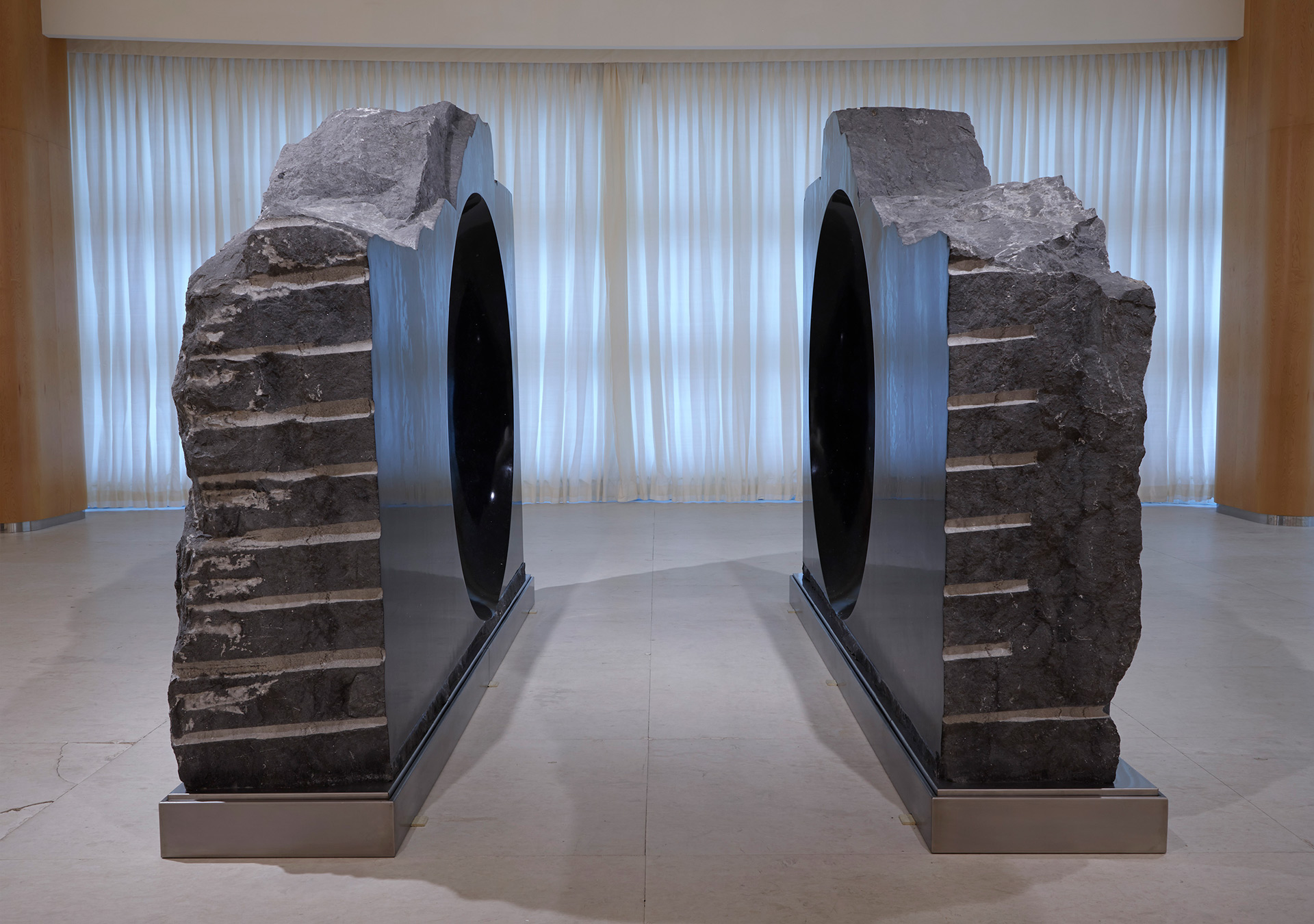
Anish Kapoor (Bombay, India, 1954)
Untitled
1992-1993
WORK INFORMATION
Kilkenny limestone, 211 × 296 × 58 cm and 211 × 296 × 55 cm
Anish Kapoor was born in India but moved to London in the early 1970s. He studied at the Chelsea College of Arts and made Great Britain his home. His sculptures, which soon brought him a renown that has only increased over the years, incorporate a wide variety of materials: pigments, fibreglass, stainless steel, wax and stone. In the 1980s Kapoor held international exhibitions featuring sculptures with brightly coloured pigment powders, creating installations of abstract forms and organic appearance. In his work, shapes are colours are infused with a lyricism that contains aspects of both Indian and Western culture. In the 1990s Kapoor received several major distinctions, including the Duemila Prize at the Venice Biennale and the Turner Prize, and was inducted into the Royal Academy of Arts, London. That decade saw him begin to work with limestone, marble and slate, and after 2000 he progressively increased the scale of his sculpture projects.
The work pictured here, from 1992–1993, consists of two facing blocks of black limestone, separated by a gap that must be understood as an active space. Each piece presents a stark contrast between its carefully polished, smooth, glossy interior and rugged, roughly hewn exterior. Together they comprise a single form that embraces duality. On the inner face of each block is a hemispherical concavity which, if united with the other, would create a hollow core. If the pieces were flush with each other nothing would hint at the existence of that inner void, but by keeping them separate and placing them at the height of the viewer, Kapoor invites his audience to imagine the sculpture like one of those natural objects that have unusual shapes or colours inside, which we only see when they are shattered and broken open. Such objects are self-made, not crafted by any human hand but forged in the matter-transforming furnaces of nature. This idea comes from Indian art, establishing the difference between the "self-made" and the artificial works of man. Kapoor combines both ideas, viewing sculpture as an encounter between the material and immaterial, between the stone mass and the void. Many of his sculptures from the 1980s are dominated by a powerful horizontality, spreading out across the ground. However, in this and other similar pieces from the 1990s, verticality and the experience of the void take precedence. That void implies a contrast between light and darkness. Whereas previously he used intense colour to convey the sensation of light, in these sculptures he does so by polishing the stone. The material itself also has symbolic meaning for Kapoor, as limestone is the product of a geological process in which water incorporates other elements into the stone's formation: an object whose very essence is not static but dynamic. [Carmen Bernárdez]

